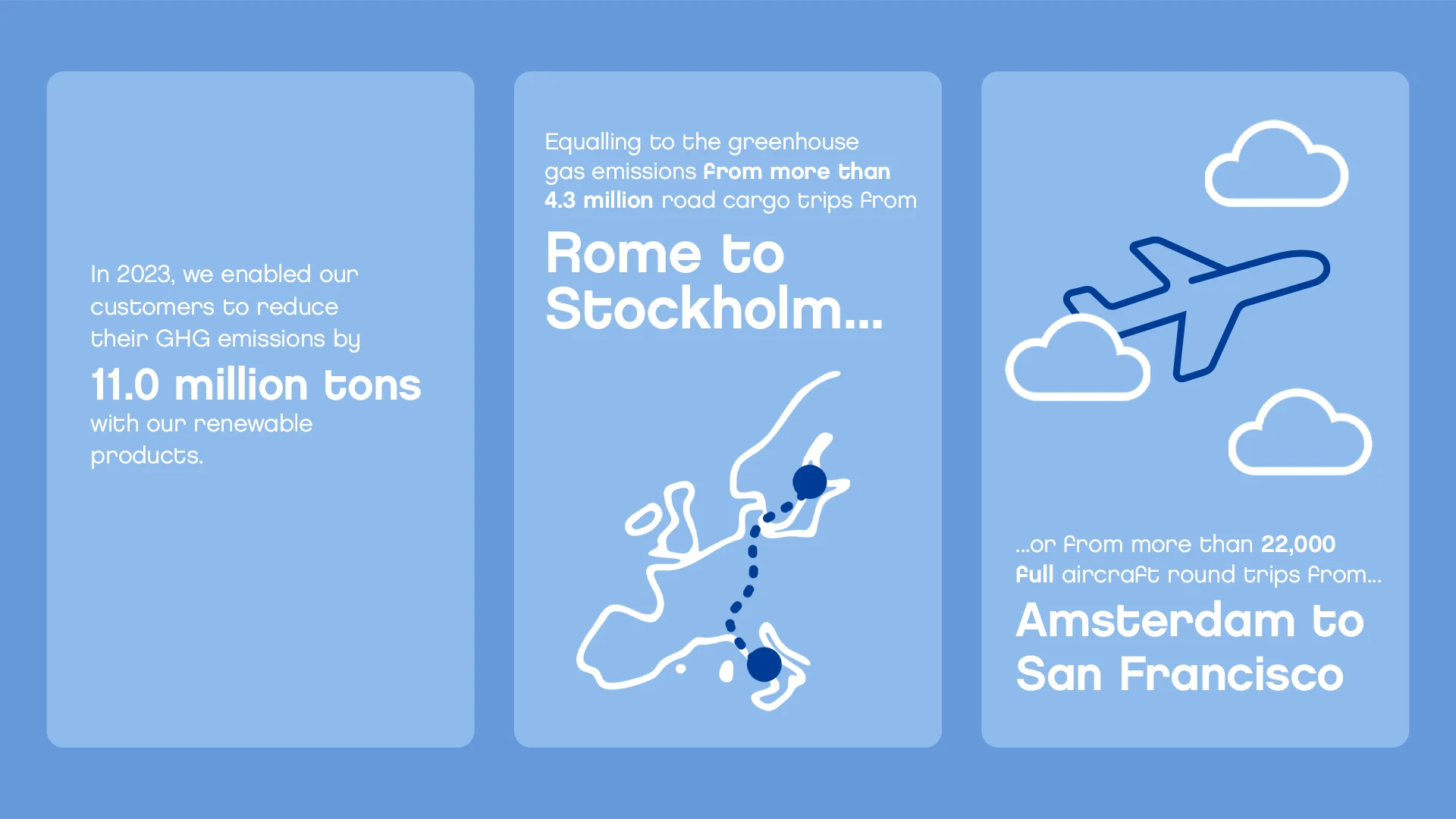
Sustainability
4 minute read
The carbon handprint: helping companies show their sustainability commitment
Most companies working to reduce their carbon emissions will be very familiar with their carbon footprint - but what they are also increasingly aware of is how they can help their customers bring down their carbon footprint too. This impact is what the carbon handprint is all about.
“The carbon handprint is a positive way for companies to show that, in addition to reducing their own carbon emissions, they can have a positive impact through their customers,” says Tuuli Kaskinen, CEO of the Climate Leadership Coalition. That sets an example for other companies as well, she explains: “We know that globally, forerunner companies play an important role in bringing others with them in climate work. The carbon handprint has been one of the tools to measure that."
The carbon handprint method, developed by LUT University and the VTT Technical Research Centre of Finland to measure this positive impact, describes the reduction in greenhouse gas emissions achieved if customers use the given company’s product instead of a conventional product. “The carbon handprint is useful when a company or organization is willing to show how it impacts the carbon footprints of others,” says Kaskinen.
So the bigger your handprint, the better - the opposite of a carbon footprint, which should be as small as possible.
Early adopters showing the way
In Northern Europe, an increasing number of companies already use the carbon handprint methodology. For example, renewable materials company Stora Enso uses the carbon handprint to estimate how much greenhouse gas emissions are reduced as a result of their customers switching to Stora Enso renewable packaging products - while also working to develop how the carbon handprint can be measured and its use broadened.
Neste, a global leader in the field of renewable diesel and sustainable aviation fuel, is another early adopter of the carbon handprint method. "The carbon handprint, or more specifically the relative greenhouse gas reduction compared to fossil fuel, is the main value proposition for our renewable fuels, like renewable diesel," says Hugo Stenberg, Sustainability Manager and team lead for Climate & Circular Economy at Neste. "Furthermore, we utilize the carbon handprint in our corporate-level communication to showcase how we are executing our growth strategy in renewables."

Kaskinen expects that over the next few years we will see more businesses start reporting their carbon handprints in addition to their own carbon footprint. “There are always companies who are forerunners,” she says. “We need those forerunners to be able to share their best practices. A carbon handprint is a way to communicate and to measure the activities that are definitely needed.”
Measuring and growing your carbon handprint
So how to jump on the bandwagon and start measuring your company’s carbon handprint - and making it bigger?
The process can initially seem overwhelming, but helpfully everything you need to know has been compiled into a Carbon Handprint Guide.
To get started the key is to set your boundaries clearly: decide which product (or service) you want to measure and define where to set the baseline. The baseline describes what a customer would have used instead of the company’s product or service. For example, when Neste calculates the carbon handprint of their renewable fuels, they use a baseline in which their customers would use fossil fuels.
“For renewable fuels, there are regulations for example in the EU and the US that define how to calculate the greenhouse gas value for products over the life cycle and also the fossil fuel baseline,” says Stenberg. “That helps us, because the handprint of our renewable fuel is then based on these regulations without the need for ourselves to define the baseline value.”
What’s the difference: handprint, avoided emissions, scope 1-3, and scope 4?
While the carbon handprint is so far mainly used in the Nordic countries, Kaskinen points out that the underlying idea is popular worldwide. “There is a global discussion about avoided emissions,” she says. “That methodology is very similar to the carbon handprint.”
The carbon handprint is also related to the increasing tracking and ambitions by companies to reduce not only their scope 1 and 2 emissions, but also scope 3 emissions. Scope 1 and 2 emissions can often be relatively directly affected by the company itself. Scope 3 looks at the entire value chain, including both upstream emissions (e.g. by suppliers) and downstream emissions related to use or disposal of the product by customers. Therefore, increasing your carbon handprint or avoided emissions - or scope 4 as this activity is sometimes also called - can have similar levers as reducing the company’s scope 3 emissions.
While it can be confusing to have multiple terms for a similar concept, Kaskinen thinks that this also shows that many people are interested in measuring their climate impact. “I think in the coming years, we will have an even stronger movement of companies behind these tools,” she predicts. “That will also develop the whole field further.”
Credits: Dr. Eva Amsen, a science writer and communicator whose work has appeared on Forbes, Nautilus and The Scientist. Twitter





